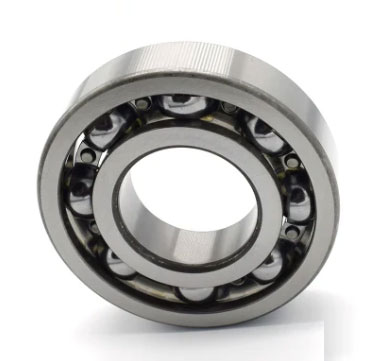Home / News / Precision Angular Contact Ball Bearings: The High-Precision Solution for Demanding Applications
Precision Angular Contact Ball Bearings: The High-Precision Solution for Demanding Applications
Introduction: The Importance of Precision Bearings in High-Performance Applications
Precision bearings are critical components in high-performance applications that require high accuracy, speed, and reliability. From aerospace and medical equipment to machine tools and robotics, precision bearings provide the support and control necessary for smooth and efficient operation. One type of precision bearing that has gained popularity in recent years is the precision angular contact ball bearing. In this article, we will provide an overview of precision angular contact ball bearings, their advantages, applications, and maintenance.
What Are Precision Angular Contact Ball Bearings?
Precision angular contact ball bearings are a type of rolling-element bearing designed for high-speed and high-precision applications that require low friction, high accuracy, and stiffness. They have an inner and outer raceway with a contact angle that allows them to bear both radial and axial loads. The raceways are separated by precision balls that ensure smooth and efficient movement, reducing friction and wear. The precision of the bearing depends on the accuracy of the raceway, ball size, and contact angle.
Advantages of Precision Angular Contact Ball Bearings
Precision angular contact ball bearings offer several advantages over other types of bearings, making them ideal for high-performance applications. One of the main advantages is their high accuracy, which ensures precise control and positioning of rotating or oscillating components. This feature is particularly beneficial in applications such as machine tools, robotics, and medical equipment, where high precision is crucial.
Another advantage of precision angular contact ball bearings is their high speed capability, which enables them to operate at high speeds without compromising accuracy or performance. This feature is particularly beneficial in applications such as aerospace and automotive, where high-speed operation is necessary.
Precision angular contact ball bearings also offer high stiffness, which provides excellent resistance to deflection and deformation under load. This feature ensures optimal performance and stability, reducing the risk of premature failure or damage. Additionally, precision angular contact ball bearings have a low friction coefficient, resulting in smooth and efficient movement and extending the lifespan of the system.

Applications of Precision Angular Contact Ball Bearings
Precision angular contact ball bearings have a wide range of applications in industries such as aerospace, automotive, medical, and machine tools, where high accuracy, speed, and reliability are necessary. Some of the most common applications include:
Aerospace: Precision angular contact ball bearings are used in aerospace equipment such as jet engines, landing gear, and flight control systems, providing precise control and reliability under extreme conditions.
Automotive: Precision angular contact ball bearings are used in automotive components such as transmissions, engine components, and steering systems, providing precise control and reducing friction and wear.
Medical equipment: Precision angular contact ball bearings are used in medical equipment such as surgical instruments, CT scanners, and X-ray machines, providing precise control and reducing friction and wear.
Maintenance and Installation of Precision Angular Contact Ball Bearings
Proper maintenance and installation are crucial for ensuring the optimal performance and lifespan of precision angular contact ball bearings. Before installation, it is essential to inspect the mating surfaces and ensure that they are clean, flat, and free of burrs or debris. The bearings should also be lubricated properly, using the recommended lubricant and the appropriate amount.
Regular maintenance is also necessary to ensure the optimal performance of precision angular contact ball bearings. The frequency of maintenance depends on the operating conditions, load, speed, and environment. It is recommended to follow the manufacturer's instructions for maintenance and to replace the bearings if there are signs of wear, damage, or abnormal noise or vibration.
When installing or replacing precision angular contact ball bearings, it is essential to handle them with care and to avoid dropping or striking them. The bearings should also be mounted with the correct orientation and preload, according to the manufacturer's specifications. Proper installation and preload can ensure the optimal performance and reduce the risk of premature failure or damage.
Conclusion: The Benefits of Precision Angular Contact Ball Bearings
In conclusion, precision angular contact ball bearings are a highly effective solution for high-performance applications that require high accuracy, speed, and reliability. Their unique design and features provide several advantages over other types of bearings, making them ideal for industries such as aerospace, automotive, medical, and machine tools. Proper maintenance and installation are crucial for ensuring the optimal performance and lifespan of precision angular contact ball bearings, and it is recommended to follow the manufacturer's instructions and guidelines. With their high accuracy, speed, and stiffness, precision angular contact ball bearings are a valuable solution for mechanical systems that require optimal performance and reliability in demanding applications.
- Previous: Understanding Crossed Tapered Roller Bearings: The High-Performance Solution for Heavy-Duty Applicat
- Next: Precision Deep Groove Ball Bearings: The Ultimate Solution for High-Speed Applications













